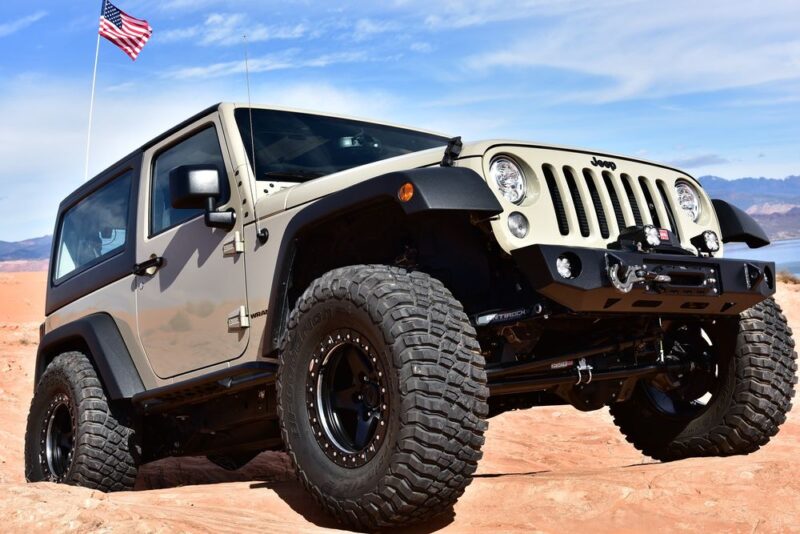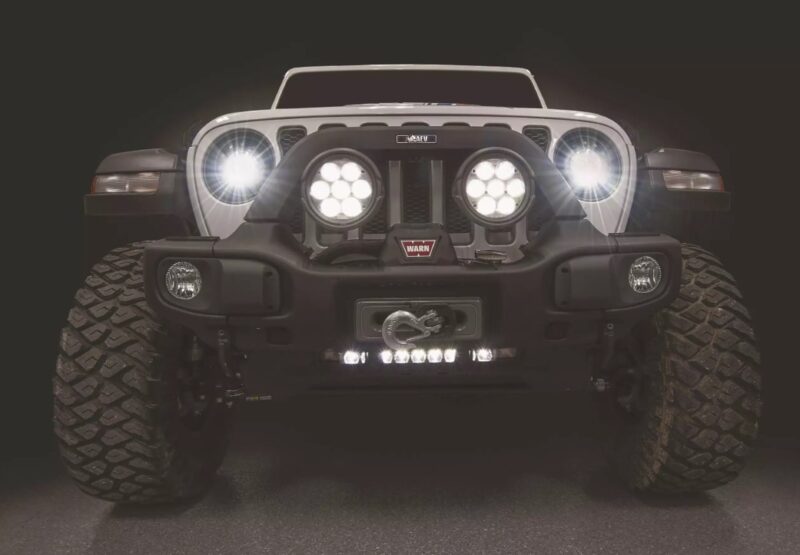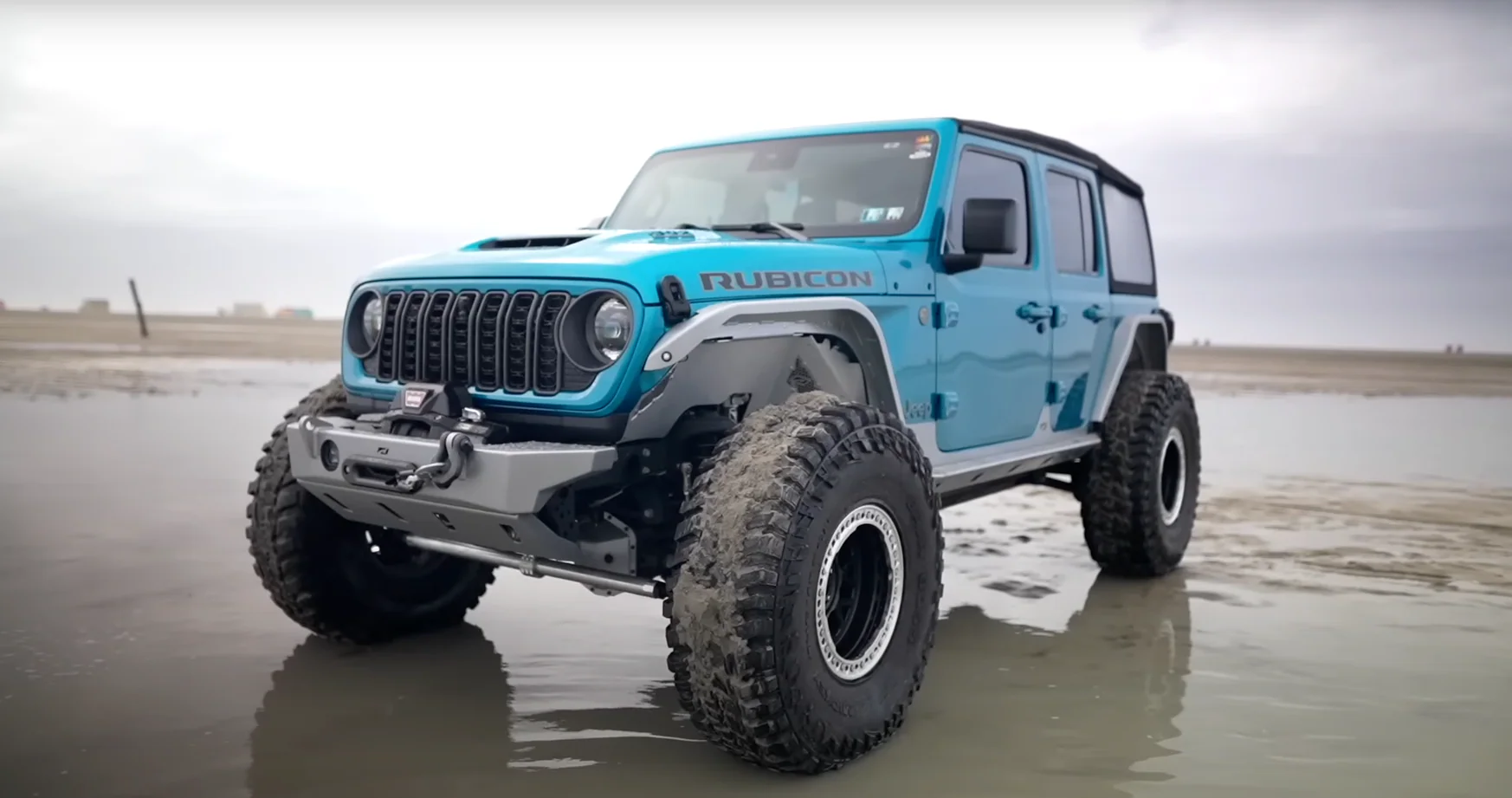Every stock Jeep is built with potential. The frame, drivetrain, and 4WD capability set the stage, but if you want to push your vehicle into true off-road dominance, you need more than potential; you need precision upgrades.
The answer lies in combining ground clearance, traction, protection, and control into a single tuned system that fits your terrain and driving style. A fully capable off-road Jeep is not built by accident; it’s engineered step by step.
Step 1 ─ Suspension and Lift Kits – Creating Real Ground Clearance
The first step toward serious off-road performance is lifting your Jeep. Stock suspension works well for highway driving and mild trails, but off-road environments need extra clearance to avoid scraping the undercarriage on rocks, mud, or roots. A 2.5 to 4-inch lift kit is the sweet spot for most off-road builds, offering a balance between articulation and drivability.
Modern suspension kits combine new springs, control arms, and shocks. Brands like Teraflex and Rough Country design complete systems that correct geometry and allow smoother weight transfer during climbs or uneven trails. For deeper rock crawling or overlanding setups, long-arm suspension systems can deliver exceptional articulation, allowing your wheels to move independently without losing traction.
Key Consideration
Before lifting, check driveshaft angles and brake line lengths. Even a moderate lift can strain stock components if not adjusted properly.
Step 2 ─ Tires – The Foundation of Traction

No modification changes performance as dramatically as new tires. Stock all-seasons simply cannot handle mud, gravel, or slick rock. Switching to 33- or 35-inch all-terrain or mud-terrain tires transforms the Jeep’s grip and control instantly.
All-Terrain Tires are ideal if you mix road and trail driving. They balance durability with comfort.
Mud-Terrain Tires, on the other hand, use aggressive tread patterns that dig into sand, mud, or snow. They’re louder on pavement but unstoppable in off-road conditions.
When increasing tire size, don’t forget to recalibrate your speedometer and consider re-gearing the differentials if you go beyond 35-inch tires. Larger tires increase rolling resistance and can affect acceleration if not properly balanced with gear ratios.
Step 3 ─ Jeep Fenders – Essential for Clearance and Protection
Once you install bigger tires and a lift, your stock fenders will likely limit your wheel articulation. That’s where jeep fenders come into play. Upgraded fenders provide extra clearance for larger tires while protecting the body from rocks and debris thrown up during off-road runs.
Steel and aluminum fenders are popular among serious trail riders for their strength and impact resistance. They also help improve airflow and reduce weight when designed with open, high-clearance profiles. Beyond functionality, aftermarket fenders completely redefine the Jeep’s stance, making it look lean, rugged, and ready for anything.
Fenders are not just an aesthetic mod; they are one of the most practical upgrades for a lifted build. Without them, tires can rub against the wheel wells during flexing, damaging both the tires and the bodywork. Investing in durable, properly fitted fenders is non-negotiable for anyone taking off-roading seriously.
Step 4 ─ Armor and Skid Plates – Defending the Underside

A lifted Jeep may clear obstacles, but sooner or later, rocks will connect with your undercarriage. That’s why armor is essential. Skid plates protect your oil pan, transmission, and fuel tank from damage, while differential covers prevent costly leaks.
Rock sliders are another must-have. They attach along the lower side panels and act like shields when sliding over boulders or ledges. Unlike traditional running boards, true off-road sliders are welded or bolted directly to the frame for structural support.
Pro tip:
Go for steel armor if you expect heavy impacts, but if you prefer to keep weight lower for overlanding or trail touring, aluminum skid plates offer an excellent strength-to-weight ratio.
Step 5 ─ Re-Gearing and Lockers – Power Where You Need It
When you add larger tires, your final drive ratio changes. The engine has to work harder to maintain torque, especially on climbs. Re-gearing your axles compensates for this by restoring the Jeep’s original power curve. Most 4.10 or 4.56 gear sets are ideal for 33–35-inch tires, while 4.88 or 5.13 work best for 37-inch and up.
Adding locking differentials is another major step toward true off-road control. Lockers allow both wheels on an axle to rotate together, sending equal power even if one wheel is off the ground. Electronic lockers (like those in Rubicon trims) can be added to other Jeep models as aftermarket kits, giving you the same capability to tackle uneven or slippery terrain.
Step 6 ─ Lighting Upgrades – See and Be Seen

Off-roading often happens when visibility drops, whether at dawn, dusk, or deep in wooded areas. Upgrading to LED headlights, fog lights, and roof-mounted light bars increases both safety and confidence.
Look for lights with a mix of spot and flood beam patterns. Spot beams project far down the trail, while flood beams illuminate the immediate area around the vehicle. A combination setup covers both distance and width, helping avoid obstacles before they become a problem.
Waterproof housings and proper wiring harnesses are essential. Aim lights correctly to avoid blinding others on the trail.
Step 7 ─ Winch and Recovery Gear – Insurance for Every Trip
Even experienced off-roaders get stuck. A front-mounted winch with a pulling capacity of 1.5 times your Jeep’s weight can be the difference between getting home and calling for help. Synthetic winch lines are now preferred over steel; l, they’re lighter, safer, and easier to handle.
Complement the winch with recovery straps, shackles, and traction boards. Store them in an accessible spot and know how to use them safely. Practicing recovery techniques before hitting challenging trails builds confidence and prevents damage when the real situation arises.
Step 8 ─ Air Systems and Tire Deflation Tools

Tire pressure is critical for traction. Lowering pressure improves grip by increasing the tire’s contact patch on uneven surfaces. However, driving at low pressure requires re-inflation once you return to pavement.
That’s why onboard air compressors or portable inflators are vital. Systems from ARB or VIAIR can re-inflate all four tires in minutes. Add a digital pressure gauge and valve deflator for quick adjustments on the go. For off-road performance, keeping tires around 12–18 PSI (depending on terrain) provides optimal traction.
Step 9 ─ Bumpers and Recovery Points – Function and Strength
Factory bumpers aren’t built for recovery loads or serious trail contact. Heavy-duty steel or aluminum bumpers add mounting points for winches, D-rings, and auxiliary lights. High-clearance designs improve approach and departure angles, reducing the risk of getting hung up on steep slopes.
Rear bumpers with integrated tire carriers help accommodate larger spare tires that can’t fit the stock mount. Always verify that your bumper’s recovery points are frame-mounted, not cosmetic.
Step 10 ─ Interior Utility – Organization for the Long Haul
A capable off-road build also needs a smart interior setup. Modular storage systems, MOLLE panels, and seat-back organizers help keep recovery tools, first aid kits, and spare parts secure but reachable. Rubberized floor liners are easy to clean after muddy trips, while all-weather seat covers protect from moisture and dust.
CB or GMRS radios improve communication on the trail, especially when traveling in groups or during long overland routes where mobile signals fade.
The Sweet Spot – When It All Comes Together
This setup retains highway drivability while unlocking genuine off-road performance that can tackle rocks, rivers, and ruts without compromise.
The result: a Jeep that looks aggressive, performs predictably, and survives whatever the trail throws at it. Every modification serves a purpose, from improved clearance to smarter traction control.
Off-roading isn’t just about reaching remote places; it’s about building a machine capable of doing so reliably. The transformation from stock to trail-ready happens through careful planning, quality parts, and a willingness to get your hands dirty. When done right, the payoff isn’t just performance; it’s the freedom to go anywhere, anytime, with confidence.

